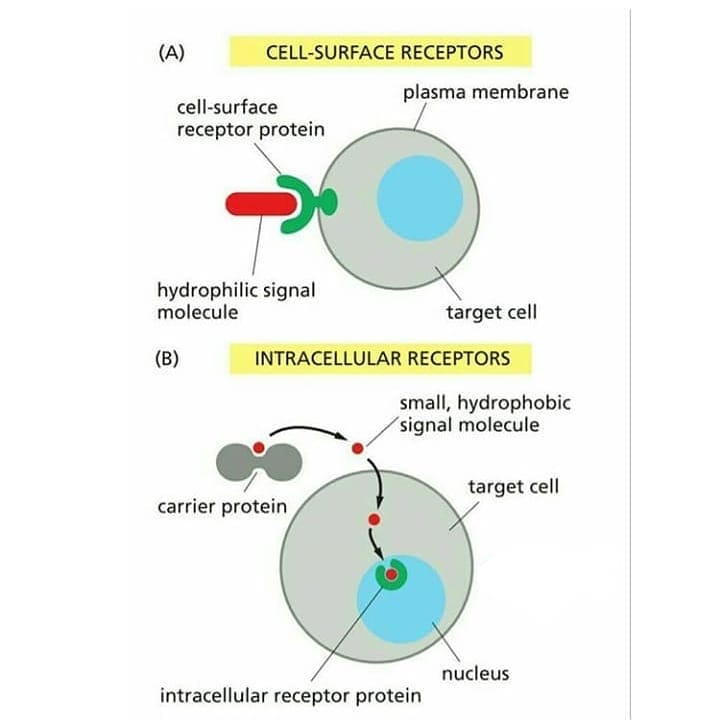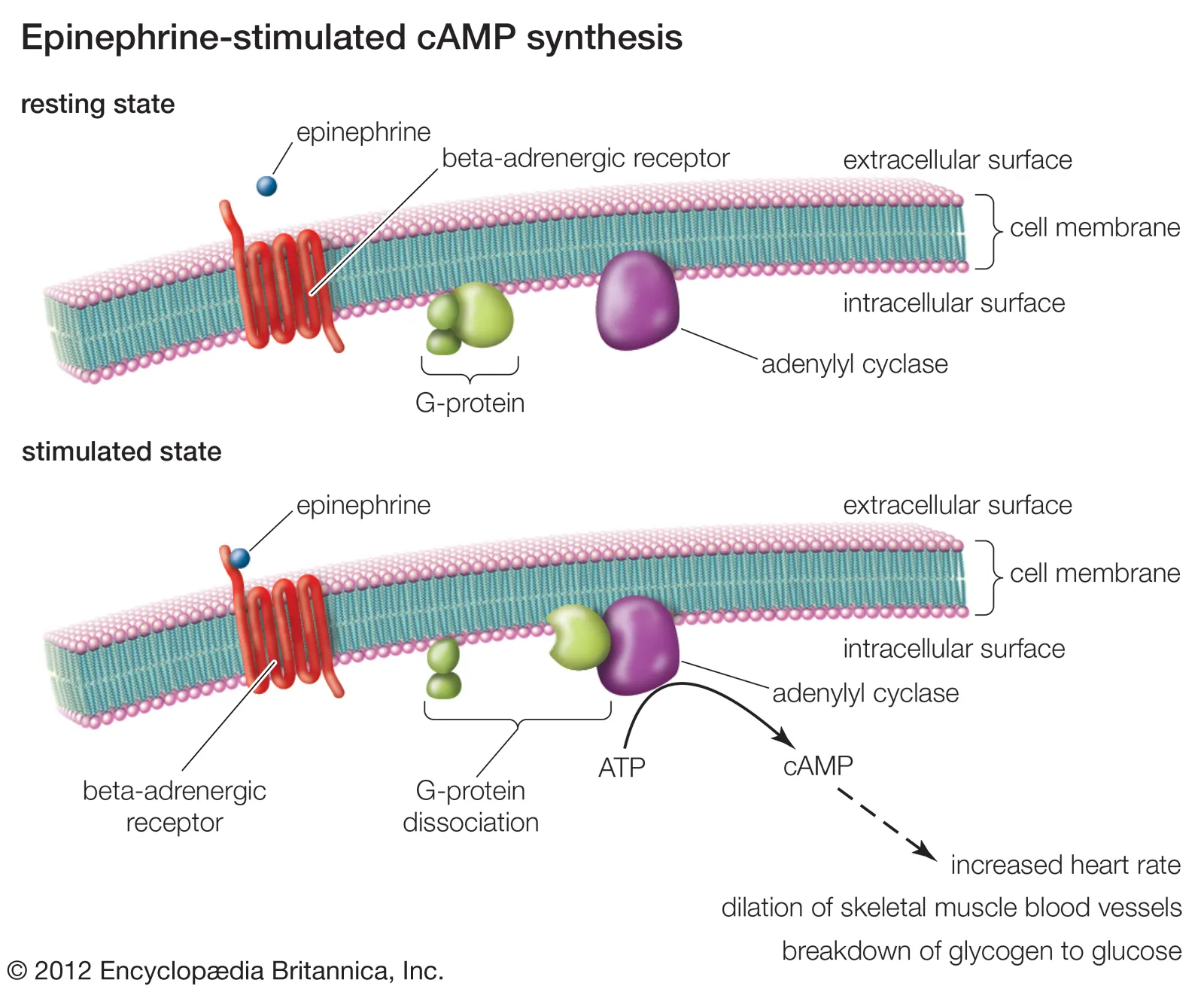Unit 4: Cell communication and cell cycle
1/33
There's no tags or description
Looks like no tags are added yet.
Name | Mastery | Learn | Test | Matching | Spaced |
|---|
No study sessions yet.
34 Terms
on the fundamental level what are the two ways that cells communicate with eachother
Direct
cell to cell communication
some sort of cell junction between adjacent cells
Signaling
Via signals
ligands
hormones are long distance
what is qurom sensing
Quorum sensing is a process where bacteria release and detect chemical signals to sense population density. When enough signals accumulate, it triggers a coordinated response like biofilm formation or gene expression, showing how even simple cells communicate.
paracrine vs endoctine vs autocrine
Paracrine Signaling
One cell sends a message to nearby different cells. It's like whispering to the people sitting around you.
Example: Nerve cells release chemicals that tell nearby muscle cells to contract, making you move.
Autocrine Signaling
A cell sends a message to itself. It's like writing yourself a reminder note!
Example: Cancer cells often release growth signals that they themselves respond to, causing them to divide uncontrollably.
Endocrine Signaling
Specialized cells release hormones into the bloodstream that affect cells throughout the body. It's like broadcasting a message over the radio for everyone to hear.
Example: When you eat something sugary, your pancreas releases insulin that travels through your blood, telling cells all over your body to absorb the extra sugar.
Two types of cell signals (long and short distance)
hormones
Long distance
Local regulator
Short distance
intracellular receptors vs plasma membrane receptors/cell surface receptors
Intracellular receptors
found inside the plasma membrane in the cytoplasm or nucleus
the signal molecule must cross the plasma membrane and therfore be hydrophobic
plasma membrane receptors or cell surface receptors
bind to water soluable ligands

What are ligands
ligands are signaling molecules that bind to a receptor to get an effect out of a cell
many ligands are hormones
Receptors have to have complementary shape
Cell signaling involving 3 steps
reception of a ligand
Signal transduction
cellular response
what happens during the reception phase of cell signaling
the signal molecule binds with a specific receptor molecule thats embedded in the PM
What happens during the transduction and response phases of cell signaling
receptor interacts with membrane proteins to produce a second messenger
the secondmessanger with other with other relay molecules bring the message to the cytoplasm which can activate enzymes
How is the mechanism of steroid (nonpolar) hormones different than those of water soluable hormones
these hormones diffuse through the phospholipid bilayer
Bind with cytoplasmic receptors which can diffuse into the nucleus and activate genes
water soluable hormones
bind with receptors and create second messangers
explain g protein receptor
Set up in membrane
There is a G protein-coupled receptor that is awaiting epinephrine
There is a G protein next to the receptor
membrane-embedding protein
membrane-embedded enzyme called adenylyl cyclase
reception
Epinephrine binds to the G protein-coupled receptor
When the epinephrine binds to the receptor, it changes a different site, which makes the G protein active and interacts with the receptor
This causes the GDP to bind with GTP to make it more energy-dense
It drifts into the protein and then binds with the adenylate cycle, which then converts ATP to cyclic AMP, which is the second messenger
Cellular response
The cyclic AMP causes a chain of relay molecules
These are kinases that go through a phosphorylation cascade
one kinase activating the next, activating the next
adds phosphate to each one to go to next step
result is signal amplification
adenylyl cyclase activates multiple cyclic AMP which activates multiple protein kinases, and it’s just this whole long thing
The receptor ejects and unbinds fast

homeostasis
the tendency of a living system to maintain its internal conditions at a relatively constant level
feedback
when the output can also be an input
negative feedback
allow organisms to maintain homeostasis as they respond to internal and external changes
The output feeds back to the system in a way that reduces the system's production.
negative feedback encourages homeostasis
positive feedback
Can accelerate internal changes and drive a process forward
out put of a system feeds back, increasing the activity and production of the system, which drives to a conclusion, after which it shuts down
what is a set point
a set point is a value around which a homeostatic process fluctuates
antagonistic negative feedback
one negative feedback system that responds when conditions are above the set point
trying to get back to set point
Mitosis purpose
duplicates the chromosomes of a eukaryotic cell, transmitting that cells entire genome to its daughter cells
how multicellular organisms corw
How unicellular organisms divide
Interphase of mitosis
G1
growth phase
S
DNA replication
G2
growth of structrues needed for cellular division
prophase
chromosomes condense, the nuclear membrane disintegrates, and a spindle apparatus begins to grow from each centrosome
metaphase
the spindle fibers pull each chromosme to the metaphase plate
anaphase
sister chromatids are pulled apart and are dragged to opposite ends of the cell
telophase
a new nuclear membrane starts to grow and then they decondense and the nucelolus starts to from
G0 phase
not all cells go through the entire cell cycle
spealcized cells leave the cell cycle and enterG0 where they wont divide
G1 checkpoint
happens at the of G1 phase
checks for cell size, nutrients dna damage and growth signals
G2 checkpoint
end of G2 phase
checks fro
Dna replication, damage and cell size
M checkpoint
happens during metaphase of mitosis
happens to check for proper chromosome alignment
Spindle attachment
cyclins
molecules whose concentrations rises and fall throughout the cell cycle
ligand gated ion channels
a channel that requires a specific signal molecule to open or close
regulates flow of specific ions
when the ligand opens the channel and ions flow in it can change cell activity
phosphorlation cascade
addition of a phosphate group to a molecule
protein kinases
enzymes that phosphorylate and activate many proteins at the next level
allows for cellular response
density dependent inhibition
the phenomenon in which crowded cells stop dividing
Anchorage dependency
in which normal cells must be attached to a substratum, such as the extracellular matrix of a tisssue, to divide